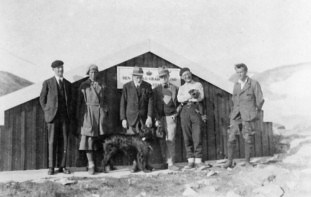
Physicists in the UK are developing an accelerometer for the Royal Navy, based on the quantum interference of ultracold atoms. The device will allow submarines to pinpoint their position underwater to within 1 m after travelling one day, without having to surface to use GPS. This is much better than is possible with current accelerometers, which are accurate to within 1 km after a day’s travel. With further development, the device could be used for oil exploration or even to do “gravity scans” of concealed objects.
Since the 1990s, physicists have been able to do interferometry experiments with ultracold atoms. Pioneered by Stanford University’s Mark Kasevich, the classic version of the experiment involves allowing an atom to fall under the influence of the Earth’s gravity. A laser pulse is fired at the atom that puts it in a superposition of two quantum states, which follow different trajectories much like photons travelling through an optical interferometer. A second pulse recombines the states and the resulting interference gives a precise measure of gravity – and can even reveal subtle effects of the general theory of relativity.
Extremely sensitive
Such a device can also be used as an extremely sensitive vertical accelerometer. Now, Ed Hinds and colleagues at Imperial College London have taken this experiment and rotated it by 90° to make an accelerometer that works in the horizontal direction. The device uses about one million rubidium atoms, which are trapped on an integrated chip using a magnetic field and laser light.
An important feature of the chip is that a single beam of laser light is used to trap the atoms. This beam is fired at a surface grating to create several beams of diffracted light, which together with a magnetic field are then used to trap the atoms.
The atoms have two quantum ground states, which the researchers denote as |1〉 and |2〉. The system is prepared so that all of the atoms are in |1〉 and then a light pulse puts the atoms into a superposition of |1〉 and |2〉. This action plays the role of the first beamsplitter in an optical Sagnac interferometer. State |1〉 has no recoil, while state |2〉 recoils along the direction defined by the light beams. Then, a second light pulse is fired at the atoms and this swaps the states so that |1〉 (with no recoil) becomes |2〉 (with recoil) and vice versa. This is analogous to the two mirrors of an optical interferometer, which direct the two diverging light beams towards a second beamsplitter, where they are recombined. Finally, a third light pulse plays the same role as the second beamsplitter of an optical interferometer.
Taking different paths
A measurement is then made to determine how many of the atoms are in state |1〉 – or, alternatively, how many are in |2〉. Either measurement can be used to compute the interferometer phase, which is related to the effective path difference taken by the two states. This path difference is proportional to the acceleration of the atoms along the direction of the light beams.
The simple design and operation of the accelerometer means that, in principle, it could be miniaturized for use on submarines. Indeed, the chamber in which the atoms are held has already been miniaturized on a chip. However, the associated electronic and optical components are still mounted in racks and on an optical table. Another challenge is to make the chip impervious to helium gas, which can leak through the walls and eventually contaminate the vacuum in which the atoms must be held.
Gravity scanners
The team is now working on shrinking the optical and electronic components of the accelerometer so that it can fit into about 1 m3. While this would make it suitable for naval use, the device would have to be further miniaturized – to the size of a beer can, for instance – before it could be sent down an exploratory bore hole to search for oil or other mineral deposits. Other possible applications that could emerge in a 5–10-year timeframe include “gravity scanners” that can peer into sealed containers and create density maps of their contents.
Hinds told physicsworld.com that it is likely that similar devices are being created for the navies of other nations. Indeed, Kasevich and colleagues have unveiled an atomic-interferometry-based “quantum gyroscope”, which is essentially an accelerometer that can be used for navigation. At the time, Kasevich said that the technology was going to be commercialized by AOsense, a company that he co-founded (see “Falling atoms measure the Earth’s rotation”).
The chip used by Hinds to trap the rubidium atoms is described in Nature Nanotechnology.
General relativity put to the test
In another recent development in the field, physicists in Germany and the US have used atomic interferometry to measure the effects of gravity on two different atoms: rubidium and potassium. The experiment found that the acceleration due to gravity experienced by both types of atoms is the same to one part in 10 million. This is the latest verification of the universality of free fall, which is a cornerstone of Einstein’s general theory of relativity. The rubidium atoms are more than twice as massive as their potassium counterparts. If they were seen to respond differently to gravity, it could point physicists towards a quantum-mechanical theory of gravity.
The research on the universality of free fall was done by Ernst Rasel of the Leibniz University Hannover, and colleagues, and is reported in Physical Review Letters.



